History of the FCSWC
A History of the Federation of Community, Sporting and Workers Clubs
This information is adapted from the publication by Bob Broadfoot OAM JP titled From the Union of Registered Workers Clubs NSW to the Federation of Community, Sporting and Workers Clubs Inc: THE FIRST 66 YEARS 1949 - 2015.
The Early Years
In the days of World War II, it wasn’t always easy to get a beer. Supplies were short, trading hours were restrictive (6 O’clock closing) and publicans were very selective. They would choose who would be served, while others were told they were not welcome. Mining communities in Lake Macquarie and the Hunter Valley coalfields resented this uneven treatment, which was not taken lightly. When the war ended miners remembered the raw deal received during the six years of fighting. They decided enough was enough and thought it was time to form their own club. Prior to this the majority of clubs were Gentlemen Clubs.
The miners sought the support of local Coalfield Labor Politicians who advised that the licensing act was soon to be relaxed making way for the issue of additional licences. This information prompted the local miners to form a club. The first Workers Club to receive their certificate of licence following the release of additional licences in the Hunter was the West Wallsend School of Arts (Incorporating the Returned Soldiers and Workers Club), now known as the West Wallsend Workers Club on 8 August 1947. Prior to this The Lithgow Workmen’s Club and the Helensburgh Workmen’s Club were the only licensed workers clubs who were both established in 1887. With the release of the additional licences workers clubs continued to be established in the Hunter and Illawarra areas.
Union of Registered Workers Clubs of NSW
Suggestions were made for the formation of a Union of Workers Clubs even before the 1946 changes to the licensing laws. The move was made in the hope that a united approach would persuade the Government to move more rapidly in freeing up the liquor laws, but no effective organisation could be formed until 1949 when several new workers' clubs had been given licences.
The formation of the Union of Registered Workers Clubs NSW was formed at a meeting of five clubs at 188 George Street Sydney on Friday 25 February 1949. The clubs represented were Weston, Cessnock, Wollongong, Lithgow and Sydney Trade Union Clubs.
Jim Comerford of Weston Workers Club was elected President and Vic Workman, President of the Sydney Trade Union Club was elected Secretary.
Jim Comerford pointed out that it was as a result of his talks with members of the British Workers’ Clubs that prompted him to call the meeting to form the Union of Registered Workers Clubs NSW.
One of the first projects of the URWC was their involvement with the Brookvale Brewery. Attaining regular supplies of beer was a chronic problem for all clubs in 1950 and to solve this problem some clubs were compelled to try other products such as the second-rate product from Mudgee.
Brewery Venture
The URWC Executive visited the Brookvale Brewery in an attempt to solve this problem and recommend to the workers clubs that they take out shares to finance the Brookvale Union Brewery founded by Mario Kapral and Val Yanko in 1950. It boasted a German brewer and produced Union Pilsener and Honey Stout.
In 1951 the executive visited the Brewery in order to recommend to clubs to be involved by taking up 20,000 shares in the Brewery. They asked member clubs to purchase 4,000 shares at a cost of one pound per share.
Following meetings were plagued with complaints from member clubs regarding beer being supplied by the Brookvale Brewery. Leaking wooden kegs, slow delivery and sour beer were the main problems put forward to the committee.
The Brewery decided to abandon draft beer production and concentrate on bottled beer which was then in short supply. It was marketed with a new label and a new name “Union Beer”.
However despite valiant efforts, the Brookvale Union Brewery could not compete with the control of the Sydney beer market by Tooth and Tooheys and the business closed in 1956.
As a financial venture, the workers clubs’ experiment in Brewery ownership had been unsuccessful, with the clubs who took out shares losing their money.
FCSWC Holiday Resorts
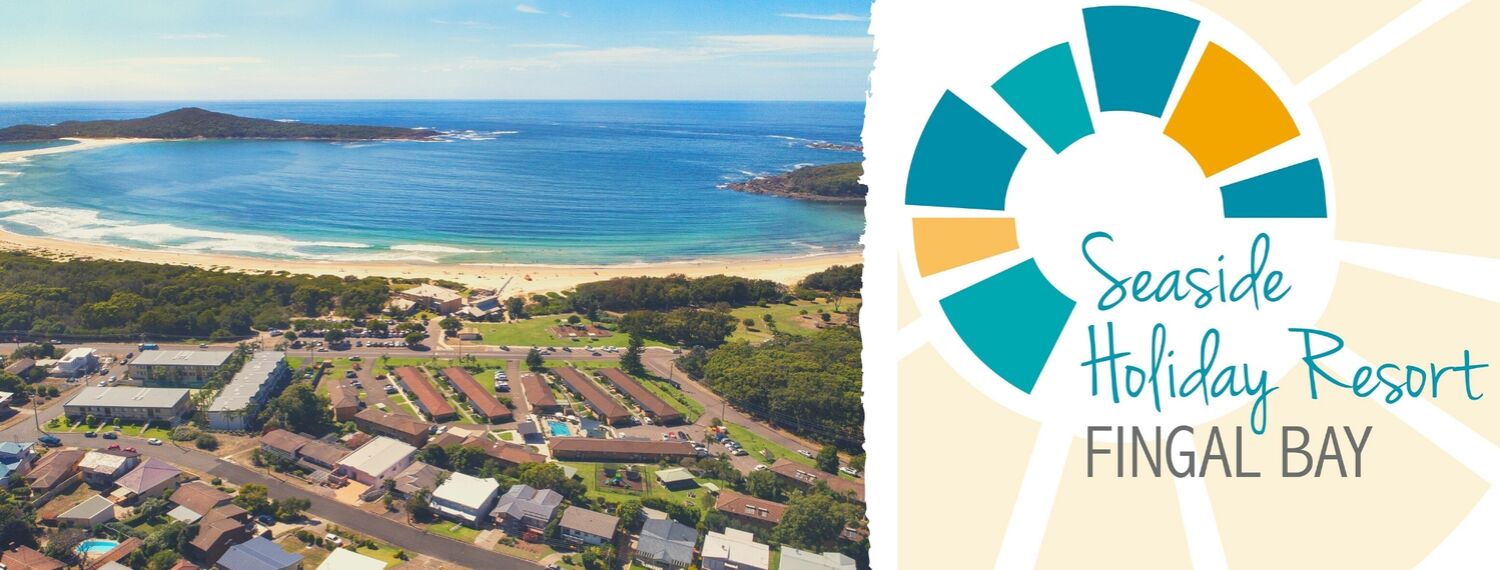
The URWC since the formation have been foremost in achieving gains for the Registered Clubs of New South Wales. The aim of this organization was to provide entertainment and facilities for their members and one event was to organise and sponsor the Easter fishing competition. Initially accommodation was rented at the Gan Gan army camp.
The success of this event prompted the Northern Region Committee under the guidance of Bill Standing (Swansea Workers), Ray O’Hara and Roy McDonald (Newcastle Workers) to obtain a special lease from the Lands Department for 5.5 acres of land at Fingal Bay in 1955.
The lease was later converted from special lease to conditional purchase on 4 August 1970. The land was valued at $22,500.
Jack Wilson, a tireless worker for the newly formed centre arranged for the purchase of an ex-army mess hall from the Gan Gan army camp to provide accommodation for the fishing club members.
The hall performed other roles beside accommodation. When relocated to the northern end of the centre it became a recreation centre with a small pool table, table tennis and a lounge area. At the end of the hall a three-bedroom residence was added for the manager. To enable expansion at the centre the hall had to be removed. A neighbour Ron Gain removed the hall to a property near Cessnock. Ian Faloon, a casual member of staff was given the residence. The residence was transported to Pindimar by boat where he turned it into a lovely home. Both was removed from the site at no cost to the Federation.
However, while a surplus army hut with only the basic amenities was good enough for all male fishing competitions, it was far short of being a family Holiday Centre.
In December 1958 Newcastle Workers Club decided to build two holiday style units, which created interest from other clubs, which included Shell Harbour, Muswellbrook, Swansea, Dora Creek and West Wallsend.
By 1959 the main hall and toilet block had been completed and work had begun on one cabin.
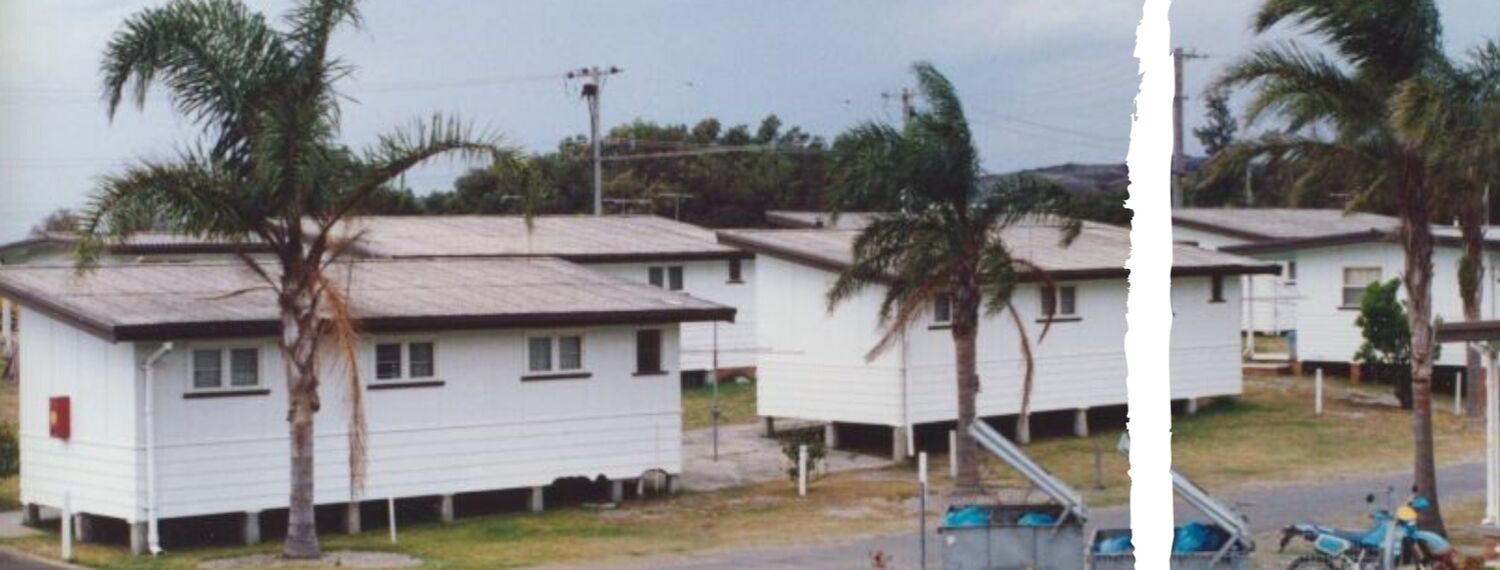
Progress was made in the next few years and by 1962 fourteen (14) fully furnished and equipped cabins were available. Rent was 4 pounds per week.
Individual clubs were required to maintain their own cabins. Little did Bob Broadfoot know that this was the beginning of a long association with the Federation of Community, Sporting and Workers Clubs when he went to Fingal Bay to replace an element in the West Wallsend Workers Club’s Belling stove.
The Northern Region Committee in 1965 embarked on a substantial renovation program to provide each unit with its own hot water shower and toilet, to replace the communal facilities provided during the Centre’s early years. Hot water was provided by two oil fired boilers located in the grounds which had a habit of sooting up. Many a time members had witnessed Roy Clark doing his Al Johnson impersonation after clearing the soot. Privacy was a problem as access to the bathroom was through the main bedroom.
Enthusiasm continued to grow and by 1969 twenty-five units had been constructed by 14 affiliated clubs.
It was in this year that member clubs raised $1,500 to provide a surfboat, named “Spirit of Eureka”, for the Fingal Bay Surf Lifesaving Club. Donations to the surf club has been ongoing with a rescue vehicle and several training skis being donated over the years.
Further land was acquired at the cost of $78,000 to expand the facilities at Fingal Bay and again at times when further monies were required Newcastle Workers Club were the first on the scene to provide loans to the Committee.
Member clubs had given the Northern Region committee permission for the building of a hotel/motel on the newly acquired block of land adjoining the centre. The committee were confident that the scheme would be commercially viable as there were no liquor outlets or motels in the Fingal Bay area and the nearest hotel was about 3kms away in Shoal Bay.
Unfortunately, the venture did not eventuate as member clubs were not willing to invest the large amounts of money required for such a project. The land was sold to John Reid at a price of $125,000.
In 1976 Jack Tapp resigned as President of the Northern Region committee and Bob Broadfoot was elected President a position he held until becoming the Federation Secretary in 1996 upon the retirement of Andy Manson.
With the retirement of Merv Lynam in 1977 Roy Clark was appointed Manager of Fingal Bay Resort.
The year 1978 heralded the introduction of brick units to the complex with four units being constructed for Newcastle, Cardiff and Kirribilli Clubs. This set the scene for more units of similar construction to be built.
As a result of representation by members of the Northern Region committee to the Minister for Sport and Recreation, Mr Ken Booth, the Member for Wallsend a grant of $108,000 was obtained from the Department of Sport and Recreation to build a further six units of which two catered for the disabled where disabled persons could now holiday as a family. The first two story unit block fondly known as the “Castle” was constructed on the Southern boundary of the property. Some members were not happy with the location as they thought it isolated those units from the rest of the Centre but failed to consider the overall future development of the Centre. The units were officially opened on 29 October 1982 by the Minister, Ken Booth MLA.
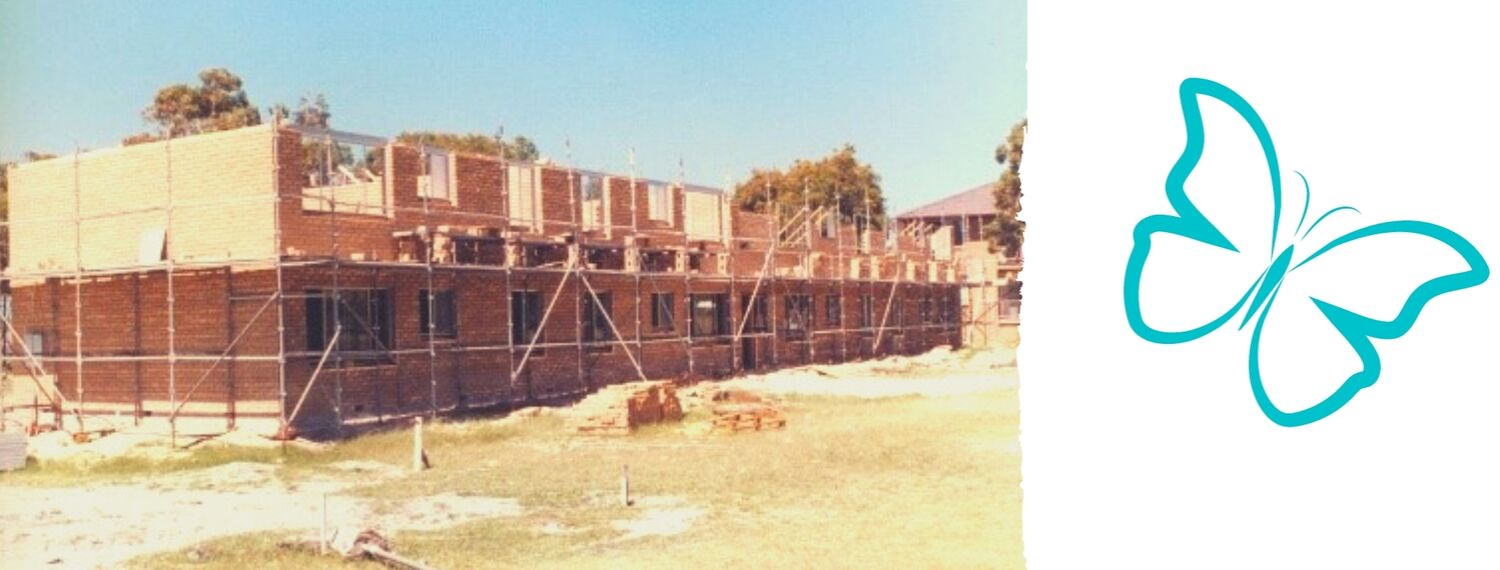
To receive the grant was not without penalty as a portion of the land as previously mentioned had to be sold to match the grant dollar for dollar, however, this was the turning point in the modernisation and development of the Holiday Centre. With the expansion of the Federation demand for more units were requested and through the support of new clubs a further two blocks of eight units were constructed. Occupancy was on the increase and in 1990 the Federation commenced a replacement program offering interest free terms over a period of 10 years to clubs to replace their existing fibro units.
On completion, a Deed of Licence was entered into between the club and the Federation. The Licence Deposit, being the value of the unit, which does not appreciate or depreciate and is listed as an asset in the club’s financial reports. The terms of the Deed of Licence allow for the value of the unit to return to the club within six months from the cancellation of the Deed of Licence by either party.
Newcastle Workers Club in December 1989 was destroyed by an earthquake and in 1990 was still waiting to rebuild. They had financially supported the Fingal Bay Centre since the beginning and had five units to replace as part of the unit replacement project. To facilitate their ability to partake in the rebuild Bob Broadfoot was directed to write to President Peter Barrack and offer a replacement deal. Ken Conway, Assistant Secretary/Treasurer drew up a proposal where the club was to pay one third of the full cost of three units over three years and then to pay the remaining costs over nine years, interest free.
To maintain occupancy during the removal of the fibro and timber units it was necessary to construct three units above the original six brick units. The work was carried out in three stages during a four-year period and included the construction of an administration complex and manager’s residence. The result being a $5m asset that provided first class, low cost holiday accommodation for members and their families.
The success of the Fingal Bay project led to more clubs joining the organization and a name change to the Federation of Community, Sporting and Workers Club was necessary to allow other clubs and trade unions to become affiliated. The Federation was incorporated on 21 November 1991.
Bob Broadfoot was given the task of designing a logo for the new incorporated Association.
The sixty units were constructed by builder Bruce Middlebury and before leaving the site he constructed the “Meeting Place” at no cost to the Federation.
On 23 May 2008 the Federation entered into an easement agreement with J Robertson to allow stormwater to drain from his property. A new title deed was issued
Upgrade of the units has been ongoing and by August 2015 there will have been 50 units completely refurbished.
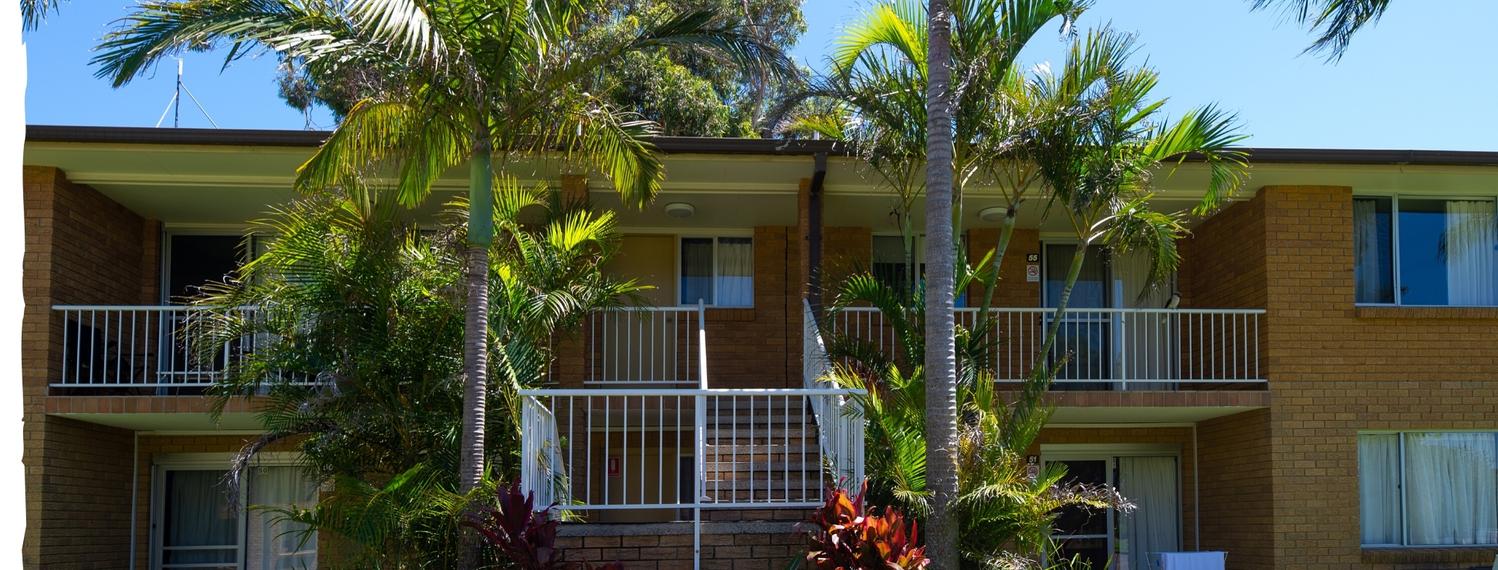
The Northern Region Committee which included Ray O’Hara, Roy McDonald, Sandy George, Jack Tapp, Merv Sampson, Clarrie Lobley, Leon Mills, Ken Conway, Jim Priest, David Jackson and Bob Broadfoot played a very important role in the formation and development of the Fingal Bay Holiday Centre.
Previous Fingal Bay Managers were Jack Wilson, Jim Clark, Les George, Merv and Colleen Lynam who served the Federation until 1977 when Roy and Maureen Clark were appointed Managers of the Centre. Roy and Maureen served the Federation until their retirement in 2000. Kyle Bradley spent the next 3 years as manager until his resignation in September 2003. Stuart Sinclair was appointed Manager and remained in this position until his resignation in December 2009 when present Manager De-Anne Anderson was appointed.
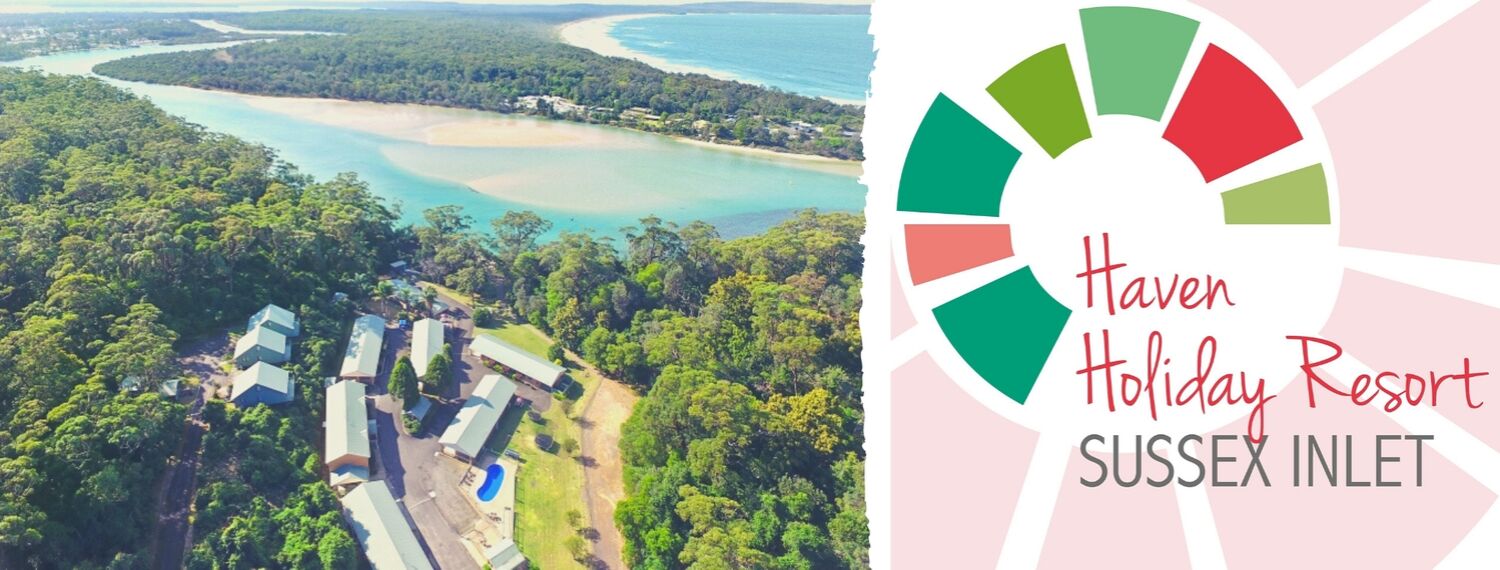
The year 1969 also marked the beginning of another project related to providing holiday accommodation. Members of Southern clubs were concerned that they had no facilities equivalent to that of the Fingal Bay Centre in their area. A number of possible sites were inspected by the Executive before it was decided to acquire some land on the southern side of Sussex Inlet known as the “Haven”.
A lease was obtained for the 4.6 hectares property. This lease was extended to perpetuity on 23 April 1990. At the time the trustees were Roy McDonald and Ray O’Hara. The name of the lease was changed on 3 April 1992 when the name was changed from the URWC to Federation of Community, Sporting and Workers Clubs. The Secretary, Bob Broadfoot noticed on the title deed a mortgage on the property with the State Bank. Following correspondence with the bank the mortgage was discharged on 15 August 1996.
Development of the centre was slow to get underway mainly because there was some difficulty raising money for the development of an access road and water supply for the centre.
By the middle of the 1970’s there were 12 units that had been constructed with one being used as the manager’s residence.
Following the name change to the Federation of Community, Sporting and Workers Clubs there were several unions that became associate members of the Federation. The LHMU now known as United Voice NSW was prepared to finance three units at the centre and were allowed their own design of the units. Architect, Peru Perumal was employed to design and supervise construction of three chalet type three-bedroom units on the high ground at the centre. The units were completed in 1993.
In 1997 four additional brick units were added to the centre. This consisted of a two-storey block with a central staircase. These units were under licence to member clubs.
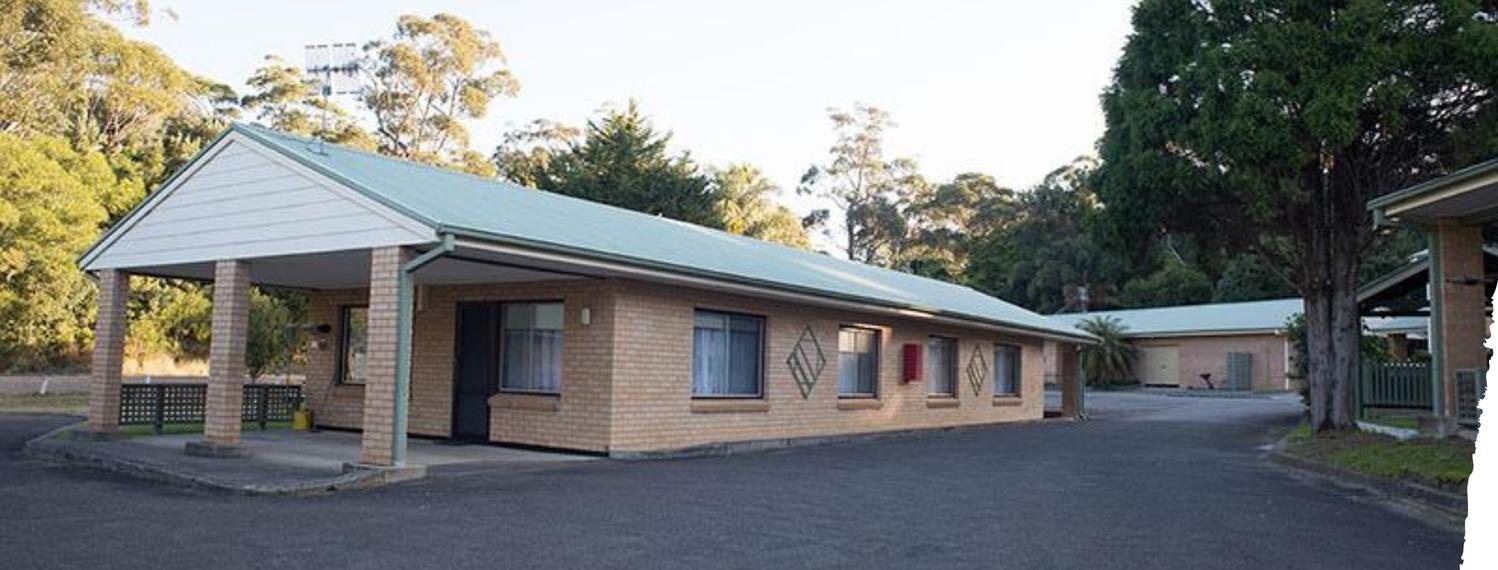
The original units were constructed with flat roofs and straw type ceilings. The roofs were a problem therefore the Federation executive embarked on a program to replace the roofs, kitchen and bathrooms. The upgrade commenced on 22 May 1999.
Further additions to the centre were a garage/workshop, office, second laundry, BBQ’s and extension to the manager’s residence.
The gravel access road to the centre has been a problem since the beginning, requiring constant repairs. Because the Road is located in a National Park the Federation has been unable to gain permission to tar seal the road. The licence that allowed repairs to the road was issued on 1 November 2005.
Similar to Fingal Bay the Sussex Inlet centre was controlled by the southern region committee. Some members of the committee were Warren Kemp, Pat Newton, Maureen Mackay, Vince Condon, Boris Beluski, Terry O’Loughlin, Jim Cudmore and Brien Higgs.
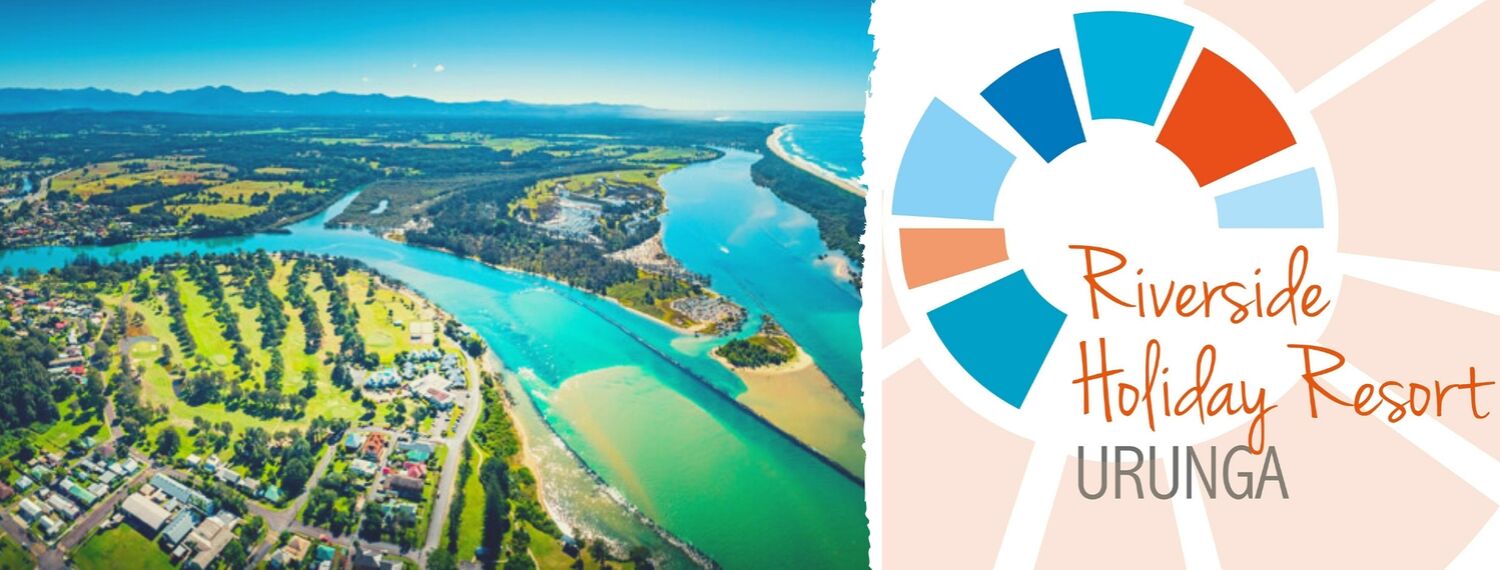
In 1994 an Option Paper was sent to clubs requesting them to consider future options for ongoing development by the Federation. The opinion of the majority was the construction of a third Holiday Centre somewhere between Port Macquarie and Ballina. A third Holiday Centre would follow the successful implementation of similar Holiday Centres at Fingal Bay, in the Port Stephens area and Sussex Inlet, south of Nowra. Little did the Executive realise at the time that this would in fact be Urunga.
The Executive of the Federation, some two years later, saw the opportunity to save the Urunga Golf and Sports Club, who was in receivership, as a valuable amenity for the people of Urunga and at the same time acquire land to build a forty unit Holiday Centre.
An offer was made to the Receivers for the purchase of the club subject to certain conditions following acceptance at a General Meeting of Federation Delegates on 27 July 1996.
The Secretary and Treasurer of the Federation addressed the Bellingen Shire Council outlining the proposed development. The Mayor and Councillors were very supportive of the project but advised that a flood study would have to be carried out and the Lands and Water Conservation would have to agree to the construction before they could approve a Development Application.
On 14 January 1997 a meeting was held with the Lands and Water Conservation to discuss the proposed project. On the same day an awareness meeting was held to introduce the Federation to the members of the Golf Club and outline the project and the proposal the Federation was putting forward to save the club.
Following this meeting an application for a new lease to cover the area where the units were to be constructed was applied for on 21 January 1997.
At a joint meeting between the Federation, Council and Lands and Water Conservation the Secretary advised that he had engaged, on behalf of the Federation, the services of Architect, Rosalie Stollery of Urunga to design the development.
It was now time to carry out the flood studies to determine what affect the development would have on the one in one-hundred-year flood levels. Unfortunately, these studies took time and the Receivers advised that the National Bank were getting impatient and were considering foreclosing on the club.
To show commitment to the club the Federation through Revesby Workers Club purchased new poker machines to increase the finances of the club. The new poker machines and Cashcade Link were installed in August 1997.
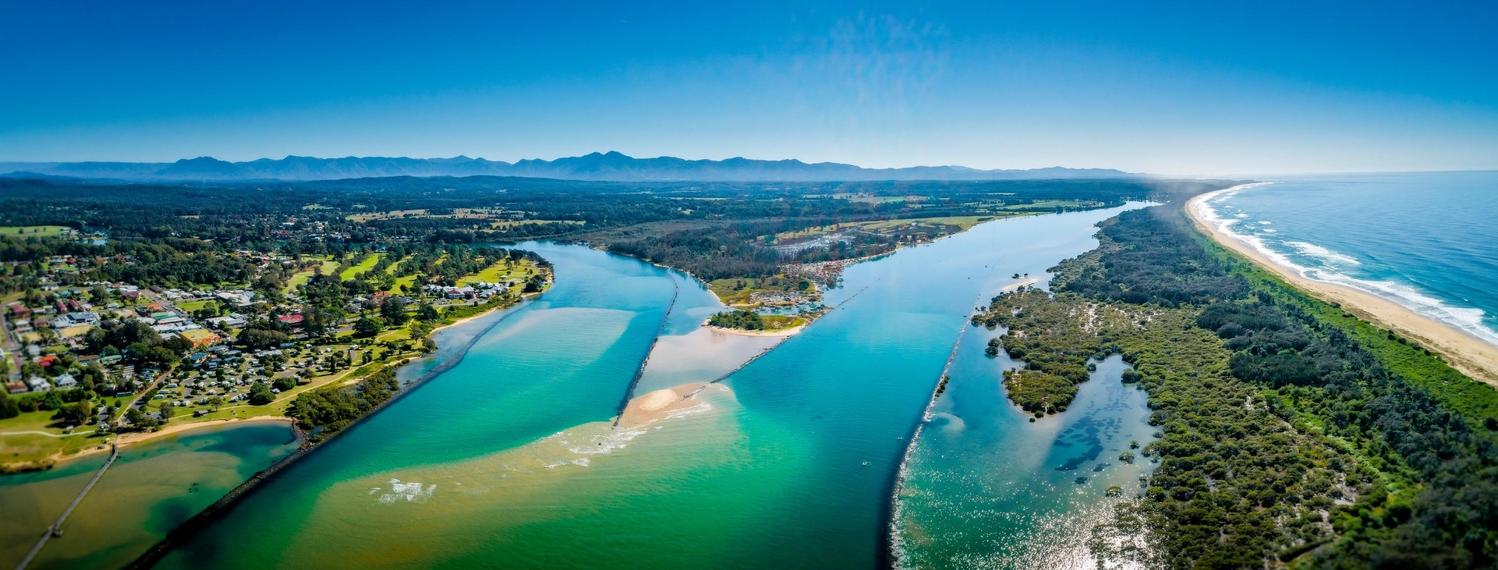
The plans for forty sub-tropical coastal style units were displayed at a further awareness meeting at which the Mayor and the Lands and Water Conservation attended, indicating their support for the development. A development application was then lodged with the Bellingen Council and at a special meeting held on Monday 29 September 1997 approved the Development Application for forty holiday units.
At this stage the major hurdle was overcome and it was now time to request the Members of the Urunga Golf and Sports Club to accept changes to the Articles of the club at a special meeting that was held on Sunday 2 November 1997. Acceptance of the changes allowed for a Board of six Directors that consisted of four Directors from the Federation. An AGM was held on 21 December 1997 to elect the Board of Directors. The first meeting of the new Board of Directors was held on 27 January 1998. The representatives who have served during those years were Ray Pugsley, Ken Conway, Bob Broadfoot, Ed Camilleri, Pat Rogan, Bob Humphrys, Dennis McHugh and Terry O’Loughlin.
The Land and Water Conservation offered a forty (40) year conditional lease to the Federation on 11 April 1998 known as Lot 273 to allow the construction of the units.
Everything was now in place and contracts were exchanged between the Federation and the Receivers at 4.00 PM on 5 June 1998 releasing the club from receivership thus giving the Federation ownership of the Club and the property on which it stood. Celebrations were held to signify the saving of the club and its facilities for the town of Urunga.
The project was outlined to Federation Clubs in September 1998 and the Revesby Workers Club, Blacktown Workers Club, Mt Pritchard District and Community Club, Newcastle Workers Club and Sutherland District Trade Union Club pledged finance for the construction of twelve units in Stage I.
Greens, tees, and croquet lawns were constructed in new locations to allow construction of the units. A new amenity building to service the croquet and tennis clubs was also constructed as part of the development.
Local consultants were engaged to prepare documentation for the building application.
The Federation Executive appointed Secretary Bob Broadfoot as Project Manager to liaise with the Architect and the Builder.
Paul Gabauer of Coffs Harbour was awarded the contract for the Stage I development and utilised the services of local sub-contractors. In fact, several were members of the Urunga Golf and Sports Club.
A Licence to proceed with construction was issued by the Department of Land and Water Conservation and Bellingen Council approved the Building Application on Tuesday 22 June 1999.
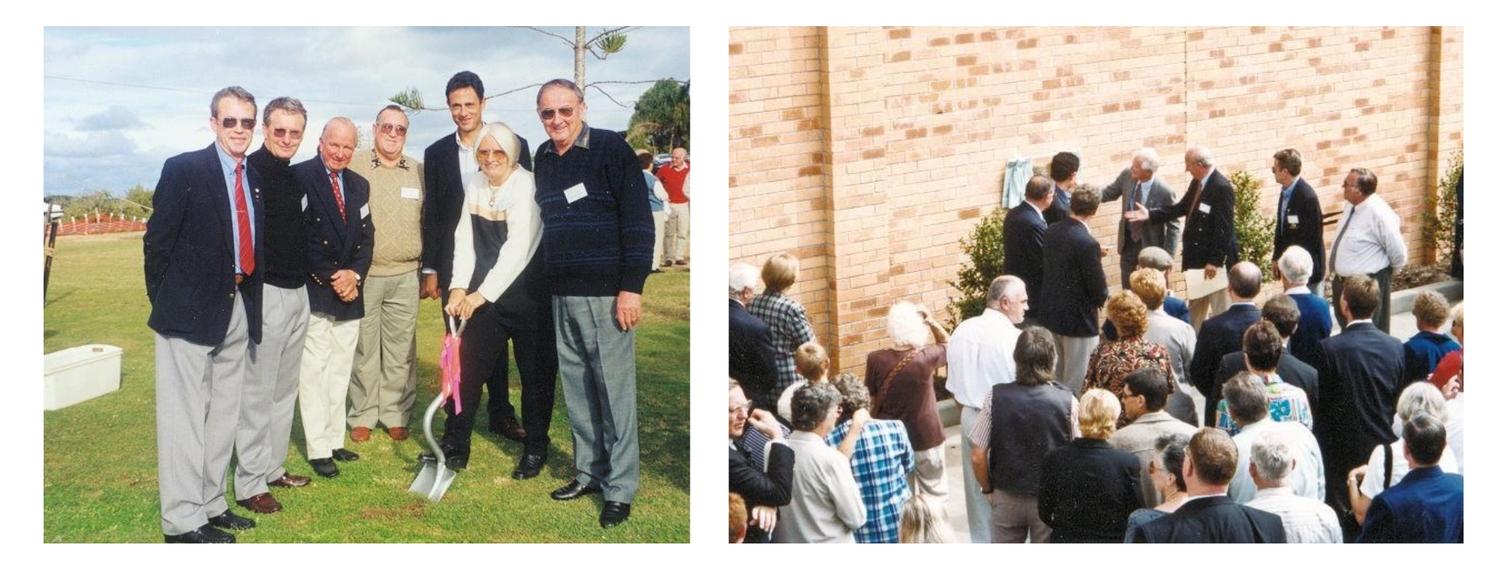
Finally, after three years of planning, negotiations and approvals it was all systems go. The then Mayor of Bellingen Shire Council, Cr Sue Dethridge, performed the ‘First Turning of the Sod’ on Saturday 3 July 1999 and work commenced on 12 July 1999.
The Sub Tropical, Coastal Style Holiday Units are rated as among the most modern units in the district and is a credit to the Architect Rosalie Stollery, the builder Paul Gabauer, Consultants and all that worked on the project. The units situated on the junction of the Kalang and Bellinger Rivers take in spectacular views of the rivers, mountains and the golf course. This had been a most exciting venture for the Federation and its Affiliated Clubs providing affordable family accommodation in what has been classed as up market units in a truly Holiday Centre atmosphere. The benefit of the licensed club, the nine-hole golf course, croquet lawns, junior playground area, squash and tennis courts made the Federation member’s holidays the envy of all other associations.
Saturday 8 April 2000 was a very special day in the history of the Federation of Community, Sporting and Workers Clubs. The $2.7M Stage I and II of this magnificent development was now a reality and was officially opened by the Mayor Gordon Braithwaite.
Before the builder left the site the development of Stage III (8 Units) commenced on 15 June 2000 and the units were ready for occupancy on 16 December 2000. The cost of the Stage II project was $1.1M. Also included in this stage was the construction of the buggy store, the lining of the pond and the bore installation.
The first employee at Urunga was Kerry Bond who was employed as a Resort Assistant on 3 April 2000. Casuals Julie Spedding and Sue Storey were also employed at the same time as casual cleaners.
Kerry’s commitment and dedication to the position was rewarded by being appointed Resort Supervisor on 1 July 2004 and then appointed Centre Manager on 22 June 2005, a position she held until her retirement on 9 October 2013.
The original centre office was at the golf club until the information kiosk was converted to the centre office.
Rebecca Beaton was appointed Centre Manager on the 26 September 2013, working with the previous manager until 9 October 2013.
The upgrading of the Pacific Highway made the journey to the Urunga Holiday Centre a more pleasant trip. Senior members were able to utilise their free rail pass and travel first class to Urunga in the XPT train that stops at Urunga.
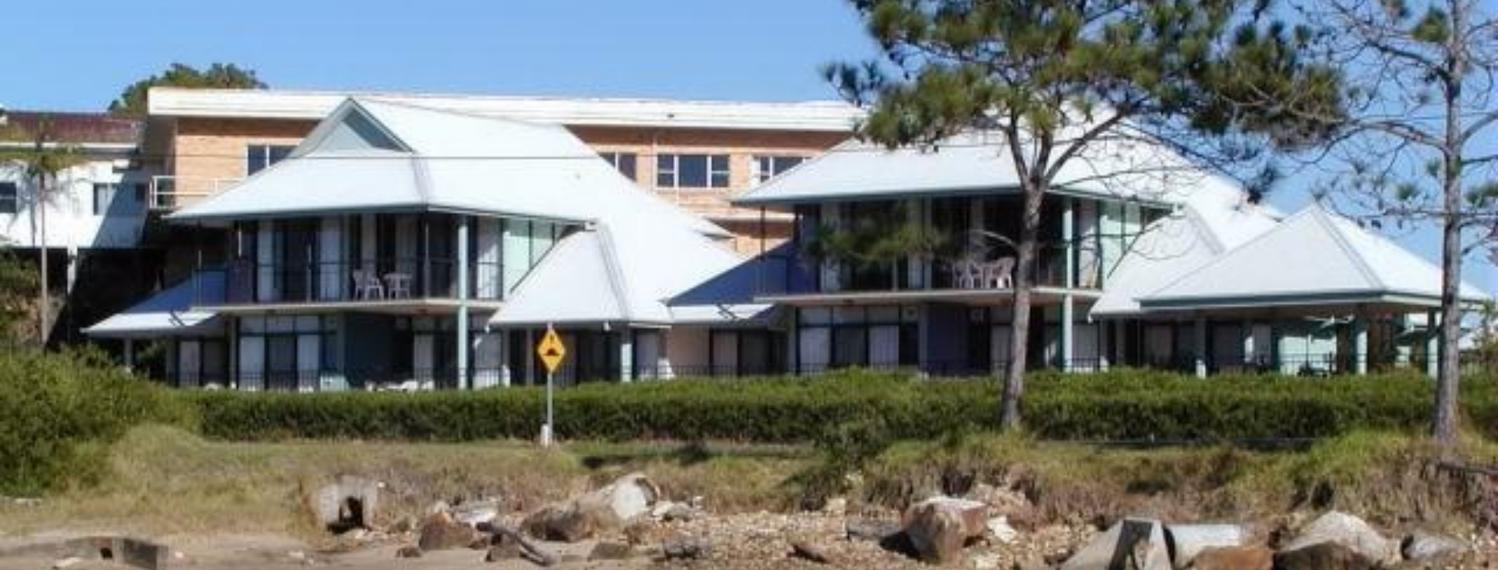
The Holiday Centre has certainly enhanced the Urunga Golf and Sports Club and has been beneficial to the Urunga Community.
Development of Stage IV (4 Units), with the awarding of the contract to local builder Craig Delahunty commenced in August 2006 and were completed in June 2007. The cost of the Stage IV project was $820,000.
Management of the golf club was not an easy task and at one stage after the dismissal of the Secretary Manager the Secretary Bob Broadfoot was again asked by the Executive to be the Secretary Manager of the club until the new manager could be appointed. He continued in this position, travelling to Urunga from West Wallsend every second week for a period of almost 12 months.
Subsequently the Executive stated that they are not there to manage clubs but are there to provide and manage holiday centres therefore the Urunga Golf and Sports Club was sold to the Coffs ex-Services Club on 11 July 2007. A lease agreement between Coffs ex-Services club and the Federation gave continued access to the front car park and entrance road to the centre.
Development of Stage V (8 Units) commenced with the awarding of the contract to Edwards Constructions on 18 August 2009 and was completed on 14 May 2010. The cost of the Stage V Project was $1.75M.
Region Committees
Initially both the Fingal Bay and Sussex Inlet Centres were controlled by regional committees and there was great rivalry between the two committees.
General meetings were quite spirited particularly with such great debaters as Roy McDonald, Ray O’Hara and Sandy George. Meetings at times were known as the North versus the South.
The then Federation President, Laurie Solomon at a general meeting argued strongly that the Executive should make quite large increases in rental charges instead of the usual CPI increases. This was strongly opposed as the Federation’s policy was to provide a “family holiday at a price you can afford” therefore CPI increases would remain.
Each centre had their own bank account in addition to the main Federation account and although the northern region account was operating without problems there had been several accounting issues with the southern region account. In 1989 the Federation Treasurer, Ken Conway was directed from a general meeting to consolidate the three accounts into one.
Although management at Fingal Bay had been consistent there had been quite a turnover of managers at Sussex Inlet. Managers had complained that they had too many bosses having to report to committees. In 1990 the Federation President Brien Higgs suggested to the executive that Bob Broadfoot be appointed Executive Liaison Officer to administer the centres and report to the executive.
This change meant the centre managers only had one boss and led to a more harmonious working relationship. The two centre committees accepted the change in management control.
The centre committees were eventually disbanded.
On 20 June 1990 Glenn Hayek was appointed on site Manager and has provided professional management for the past twenty-five (25) years.
Bob Broadfoot continued in the role of Executive Liaison Officer until 1996 when he was elected Federation Secretary and the two roles were combined. Bob resigned as Federation Secretary on 30 April 2015 after being involved with the Federation for 50 years.
In 1965 following the death of the President of the West Wallsend Workers Club in a mine accident, Bob was elected President, a position he held for 28 years at the club. When elected at the age of 30 he was the youngest President in the workers club movement. He was awarded life membership of the West Wallsend Workers club in 1983 and life membership of the Federation in 1997.
For his leadership roles in the Federation of Community, Sporting and Workers Clubs and the Community he was awarded the Medal of the Order of Australia (OAM) on 26 January 2008.
The Federation and the Registered Clubs Association (ClubsNSW)
The relationship between the Federation and the RCA was not always a harmonious one.
In 1969 the URWC at an AGM at Dubbo nominated Roy McDonald as a Vice President and Ray O’Hara as a State Councillor.
They also asked for a constitution change to divide the State into regions which would elect a regional representative of the RCA State Council.
Also, to allow 18-year-olds to become members of a registered club.
And to have an industrial section as part of the RCA.
This turned out to be a disaster as a Newcastle club took many delegates from small clubs in Newcastle to Dubbo to vote against the motions. As a result, in 1972 the Federation and many workers clubs disaffiliated with the RCA.
During the break with the RCA the Federation affiliated with the Licensed Clubs of Australia.
It wasn’t until seven years later that the Federation re-affiliated with the RCA following the introduction of the three changes the URWC proposed in 1969.
Ken Conway was the Federation’s representative as a State Councillor for many years until work commitments prevented him from remaining in this role. Ken was awarded life membership for his service to the Federation in March 2007. Ed Camilleri is presently representing the Federation on the State Council and was awarded life membership for his service to the Federation in April 2015.
Federation representatives Brien Higgs, Bernard Harley, Gerard McMillan and Bob Broadfoot were Club of the Year Judges for several years until ClubsNSW replaced voluntary judges with paid professional judges.
The Federation and their Clubs Provide Assistance
The URWC/Federation has supported member clubs for many years dating back to 1968.
The first club to be supported was the Bulli Workers Club when a loan of $4,750 was arranged to provide financial help. The URWC agreed to supervise the club’s management until they were able to operate financially.
The second club to receive financial assistance was the Cronulla Labour and Workingmen’s Club when the Federation acquired debentures totalling $13,000, to assist the club.
The third club to receive financial assistance was the Weston District Workers Club when they were unable to pay debts of $50,000, following misappropriation of funds at the club. The Federation arranged a loan of $50,000 with the club’s unit at Fingal Bay being used as collateral to secure the loan.
When it was decided not to proceed with a hotel/motel at Fingal Bay it was agreed to support a proposal to build a club at Fingal Bay. Centre Manager, Roy Clark was the driving force behind the project and became the foundation President of the Fingal Bay Bowls Sports and Recreation Club.
Member clubs were requested to provide financial assistance to develop the club by taking $5,000 debentures at 10% interest. This raised $90,000 to support the club.
Member clubs also donated equipment. Kirribilli provided kitchen equipment and Mounties gave carpet and furniture. Newcastle Workers Club were unsure what they gave as every time Roy Clark visited the basement at the club, he always took his trailer.
Operation Care: There are Australian troops who have been to the front up to eight times during the Afghanistan conflict and have some issues with health and injuries. The Operation Care Project was a joint venture between the RSL and Service Clubs Association and the Federation that was created to assist the service personnel who have families.
Two member clubs, C.ex Coffs and Blacktown Workers Clubs donated $5,000 each for Operation Care. This donation allows twenty (20) families to take a holiday at one of the Federation’s Holiday Centres.
Life Members
The success of the Federation of Community, Sporting and Workers Clubs cannot be put down to one person. Over the years many have made a dedicated and professional commitment to the Federation and it is only fitting that these persons have been rewarded for their dedication and service by having life membership bestowed upon them.
Roy McDonald Bill Frame Ray O’Hara Sandy George Jack Tapp
Jim Priest Jim Cudmore Laurie Kaufmann Mervyn Sampson Brien Higgs
Leon Mills Bob Broadfoot OAM Ray Pugsley Roy Clark Warren Kemp
Ken Conway Pat Rogan Edward Camilleri Robert Humphrys
Terry O’Loughlin Dennis McHugh
Timeline of Bob Broadfoot’s Involvement with the Federation of Community, Sporting and Workers Clubs 1965 to 2015
1965: Was elected to the Northern Region Committee of the FCSWC.
1976: Was elected President of the Northern Region Committee of the FCSWC.
1990: The Federation President Brien Higgs suggested to the executive that Bob Broadfoot be appointed Executive Liaison Officer to administer the two Holiday Centres and report to the executive. This service was provided on a voluntary basis initially and later for a small honorarium.
1996: Became Federation Secretary, a position I held until my retirement on 30 April 2015 (19 years).
Commenced involvement to purchase the Urunga Golf and Sports Club and the development of the Urunga Holiday Centre, acting as Project Manager, to liaise with the Architect and the Builder. Again this service was as a volunteer.
1997: Elected as a Director of Urunga Golf and Sports Club (8 years) Awarded Life Membership of the Federation.
2008: For my leadership roles in the Federation of Community, Sporting and Workers Clubs and the Community I was awarded the Medal of the Order of Australia (OAM) on 26 January 2008.
2015: Saw my retirement as Secretary of the Federation and ended a commitment to the Federation of 50 years (1965 – 2015)



